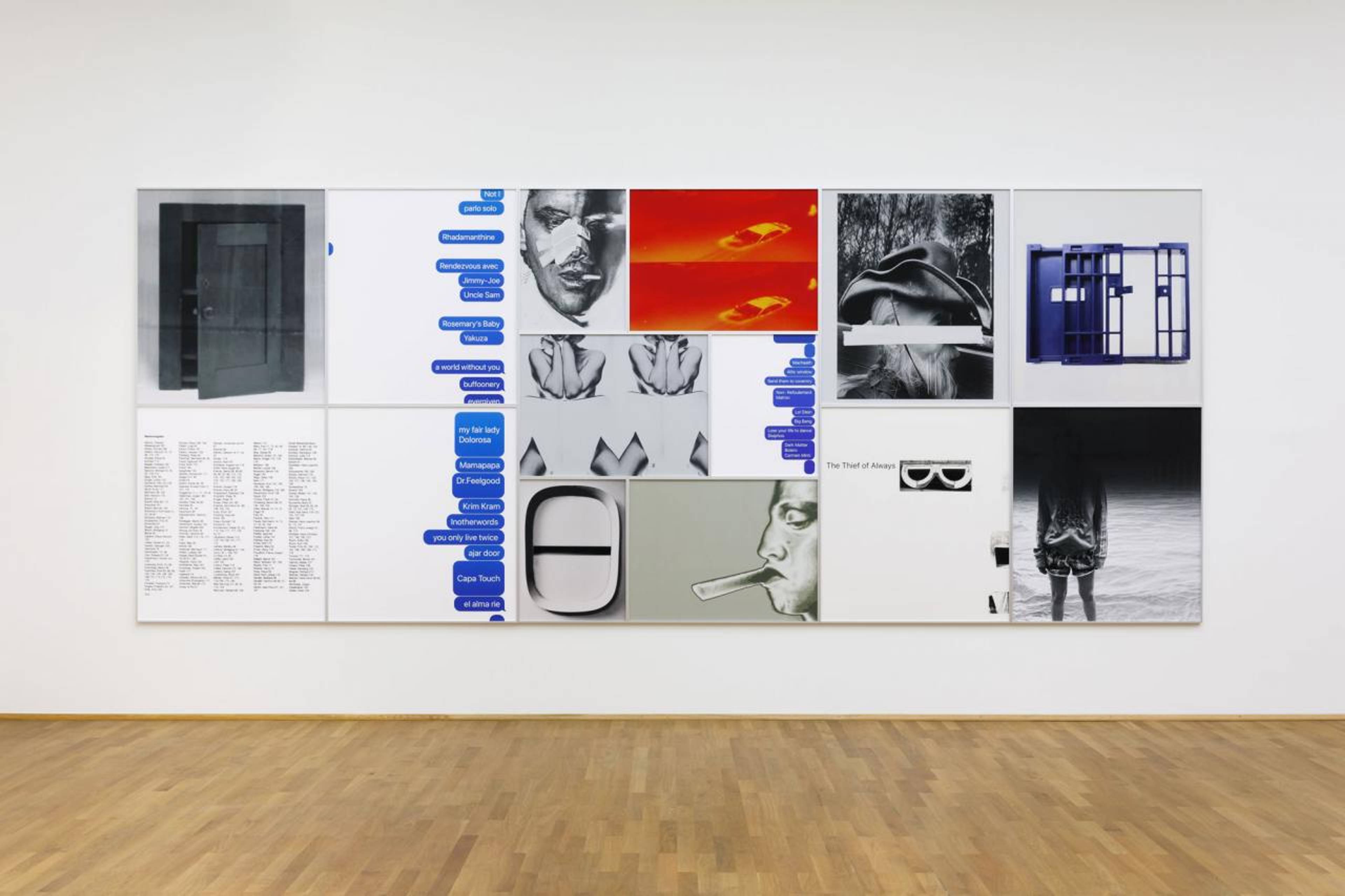Frankfurt’s Museum für Moderne Kunst is certainly the best address in Germany for those interested in comprehensive, “classical” retrospectives, which have become rare in progressive exhibition-making. Following Cady Noland and Marcel Duchamp, three hundred works by Rosemarie Trockel (*1952) form a parcours over all three floors of the MMK, taking over even the last corners of the winding Hans Hollein building. No cabinet, no matter how small, remains unfilled.
Trockel became known to a broad public at the very latest with the real-life installation Haus für Schweine und Menschen (A House for Pigs and People, 1997), in collaboration with Carsten Höller for documenta X. In Frankfurt, however, it is more classic work forms – objects and images – that prevail: The sculptures are virtuosic in their use of materials, as in Copy Me (2013), an overlong, cast-steel designer couch covered with transparent plastic, while much space is allotted to neo-informal ceramics, such as the meat replicas of “Shutter” (2006–10) and the monumental, metallic-glazed portal Zum schwarzen Ferkel 3 (Black Piglet 3, 2006). Besides countless drawings, watercolors, and collages – including an entire room of cover designs for fictional books whose image-text puns, e.g., Theoriephobie (Theoryphobia, 1983) point to the heart of the German 1980s – the more recent “Cluster” series (2015–) erratically assembles photo reproductions of the artist’s own works. It makes no difference whether Trockel does the work herself or, more often, has it produced.
View of Rosemarie Trockel, MUSEUM MMK, Frankfurt, 2023. © Rosemarie Trockel and VG Bild-Kunst, Bonn 2022. Photo: Frank Sperling
Rosemarie Trockel, Wasser, 2004. © Rosemarie Trockel and VG Bild-Kunst, Bonn 2022. Photo: Axel Schneider
It is a pity that her most famous group of works, the machine-produced “knitted pictures,” are shown in large numbers, but not concisely selected. These pieces, which are still readily interpreted in feminist terms – knitting as a traditionally female-coded, artless manual labor – quickly gained Trockel international fame at the end of the 1980s, and not by chance. In response to what Wolfgang Max Faust proverbially called a “hunger for images,” she provided both an evasive and affirmative answer to the painting boom then fading away. Moreover, Anselm Kiefer and Georg Baselitz had set a high bar for retro-nationalistically charged art “from Germany” with their joint contribution to the 1980 Venice Biennale “Verbrennen, verholzen, versenken, versanden” (Burn, Lignify, Sink, Silt). Thereafter, Kiefer’s Märkischer Sand ([Ways:] March Sand, 1980), which he began applying to his picture panels alongside lead and straw, went down all the better with US clientele. Hadn’t Susan Sonntag just raised the fascinating power of fascist aesthetics as a subject for discussion? Trockel’s comments on the artistic sellouts of German history were not always as harmless as in Made in Western Germany (1987), with its machine-knitted seal of German quality. Sometimes, even in Trockel’s works, “with the best will in the world, you can’t see a swastika,” to adapt the infamous title of a painting by Martin Kippenberger – one year her junior – that plays on the persistent denial of Nazi crimes. Nonetheless, she allowed herself plenty of oblique swipes at social clichés and art-world power structures.
If Trockel is still considered the most internationally renowned woman artist “from Germany,” the Frankfurt show fails to show why or what that means today. In a global art world, such attributions no longer matter much, as artists must increasingly function like brands. For many years, Trockel has ranked as the “eternal fourth” on Kunstkompass, an art-business ranking invented in the 1970s that has become a kind of national myth. There, according to the old Rhenish-West German rules apparently still in use, the most valuable art is that which originates on the transatlantic axis between New York and the Rhineland. (Consider that Trockel’s career began in the now-mythic Cologne of the early 80s, in collaboration with her gallerist, Monika Sprüth.) It is remarkable that not even her voluntary, seven-year hiatus from exhibitions changed Trockel’s ranking behind Gerhard Richter, Bruce Nauman, and Baselitz.
Rosemarie Trockel, Less Sauvage than Others, 2006/2011. © Rosemarie Trockel and VG Bild-Kunst, Bonn 2022. Photo: Frank Sperling
Rosemarie Trockel, Sabine, 1994. © Rosemarie Trockel and VG Bild-Kunst, Bonn 2022. Courtesy: Sprüth Magers
Is it mere coincidence that this retrospective coincides with the end of that pause and the artist’s 70th birthday? To whom the timing may seem all too perfect, rest assured: There are many reasons to take another, closer look at this work, which is often, but rarely validly, shown “comprehensively.” The discrepancy between “brand” and “work,” which is definitely integral to Trockel’s recipe for success, is evident in her refusal to adopt a “signature style,” the heterogeneity of her media and themes, and the deliberate disparity between an idea and its materialization. This retrospective rightly emphasizes the discrepant, whimsical, and laconic nature of the work, relying on the immanent effect of pieces (over)staged by colored walls, dramatic lighting, and “surprising encounters.” At the same time, however, it misses the opportunity to contextualize Trockel’s career in terms of art and contemporary history – the very thing that makes a retrospective significant in the first place. When work after work is lined up without determining where its significance lies, the focus shifts above all to how much Trockel’s work today is primarily determined by reproducing the Trockel brand, with the MMK role-playing a somewhat overambitious assistant.
Rosemarie Trockel, Unplugged, 1994. © Rosemarie Trockel and VG Bild-Kunst, Bonn 2022. Photo: Axel Schneider
___
Rosemarie Trockel
MUSEUM MMK, Frankfurt
22 Dec 2022 – 30 Jul 2023







